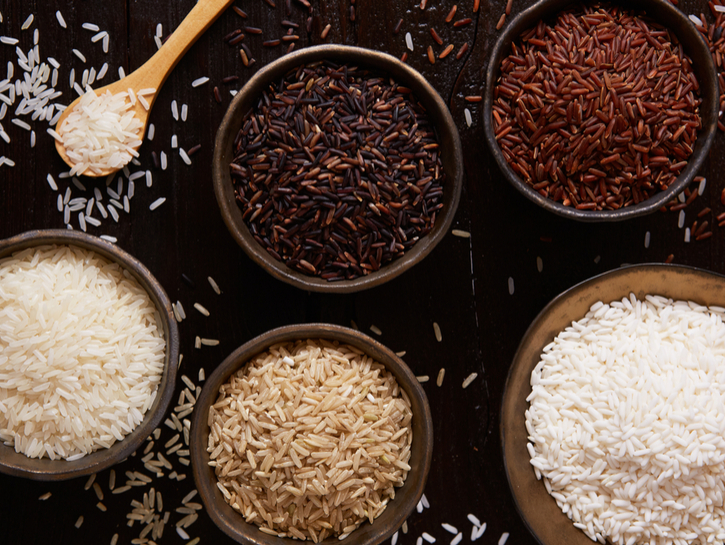Rice and quinoa are both used in similar ways, have their own nutritional benefits and can often be used interchangeably in recipes. But when it comes to the healthiest option to turn to, it’s quinoa that takes the cake. Read on to find out how:
What Is Rice?

DONOT6_STUDIO/Shutterstock
Rice is a grain made from the seeds of grass species Oryza sativa (which makes Asian rice) and Oryza glaberrima (African rice). While there are only three types of quinoa, there are many different varieties of rice that can be used in numerous ways and in all types of cuisine. Rice is a common staple of Mexican dishes such as burritos, works as a base for stir-frys and can be eaten plain as a side.
What Are The Health Benefits Of Rice?
There are at least a dozen different types of rice, all with different nutritional benefits and varying levels of overall health. The two most popular types of rice are brown and white.
Brown rice is the healthier of the two types because it is a whole grain, meaning the germ and bran parts of the grain are included (in white rice, much of the germ and bran have been removed). Both types are low-fat, low in sodium and cholesterol free, but white rice has lost most of its nutrients that brown rice still retains. Brown rice is, therefore, higher in minerals such as magnesium, phosphorus, selenium, and fiber.
What Is Quinoa?

Umpaporn/Shutterstock
Like rice, Quinoa (pronounced “keen-wah”) is also a seed. It originated in the Andes Mountains of South America, and has recently surged in popularity in the U.S. because of its health benefits. There are three main types of quinoa — red, black and white — and each can be used as a base for many dishes, including oatmeals, salads, soups and casseroles.
What Are The Health Benefits Of Quinoa?
Quinoa is so rich with nutrients that it is considered a “super food.” It’s high in protein, gluten-free, filled with antioxidants and is a great source of iron, fiber, magnesium, phosphorus, manganese, potassium and zinc.
Which Is Healthier: Quinoa Or Rice?

Ildi Papp/Shutterstock
When cooked, both quinoa and rice have about the same amount of calories — quinoa has about 222 calories per cup, whereas brown rice has 248 calories per cup. The two also have a similar amount of carbohydrates — about 39 grams per cup of quinoa and 52 grams per cup of rice.
However, when it comes to nutrients, quinoa proves to be much healthier than rice.
Quinoa is considered a healthier option than rice because it is simply a better source of most minerals, including iron, magnesium, fiber and protein. Quinoa is also more filling than rice, so you can eat less of it and feel fuller for a longer period of time.
How Are They Similar?
Both rice and quinoa are seeds that, when cooked alone, taste rather bland. Therefore, they’re both used in common ways — as bases or sides for larger dishes. If served alone, they both need to be prepared in a way that will maximize their dull flavor, such as cooking them in butter, olive oil or broth.
